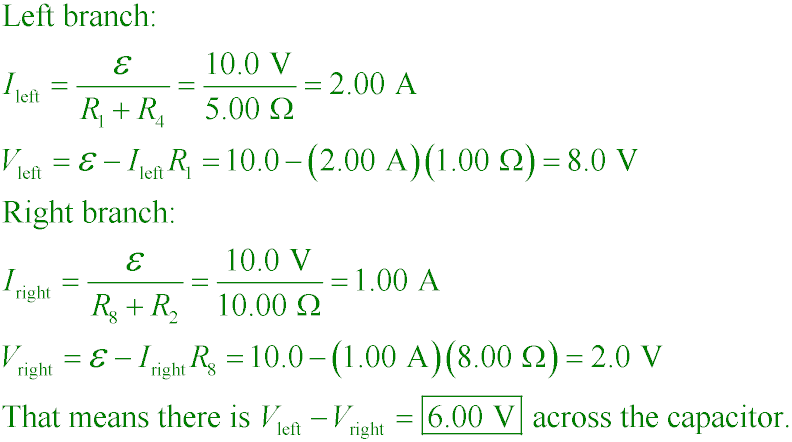Summary
- Series circuits
- Parallel resistors
- Kirchhoff's laws
- Written Quiz Ch. 26

- RC Circuits

- Practice:
Try these additional examples
Example #3
- Prepare:
Read textbook section 28-1 before the next lecture
POP5 21.59a
At steady state what is the voltage across the capacitor in the figure?

A. 2.00 V
B. 4.00 V
C. 6.00 V
D. 8.00 V
Answer
POP5 21.59b
If the battery in the figure is disconnected, how much time does it take for
ΔVcap = 0.10ΔV0?

A. 8.29 µs
B. 158 µs
C. 3.33 ms
D. 125 ms
Answer
Walker5e 21.61
Two capacitors, C1 = C and
C2 = 2C, are connected to a battery. Capacitor _____ stores more energy when they are connected to the battery in series and capacitor _____ stores more energy when they are connected in parallel with the battery.
A. C1 ... C1
B. C2 ... C1
C. C1 ... C2
D. C2 ... C2
Answer
C. 6.00 V

The left side of the capacitor is at the higher potential.
A. 8.29 µs

C. C1 ... C2
When connected in series the two capacitors have the same charge. By noting that U = ½Q²/C you can see the smaller capacitor C1 stores the most energy. (Confirm for yourself that if the battery voltage is 6.0 V and C = 10.0 µF, C1 stores 80 µJ and C2 stores 40 µJ.)
When connected in parallel the two capacitors have the same voltage. By noting that U = ½CV² you can see the larger capacitor C2 stores the most energy. (Confirm for yourself that if the battery voltage is 6.0 V and C = 10.0 µF, C1 stores 180 µJ and C2 stores 360 µJ.)







